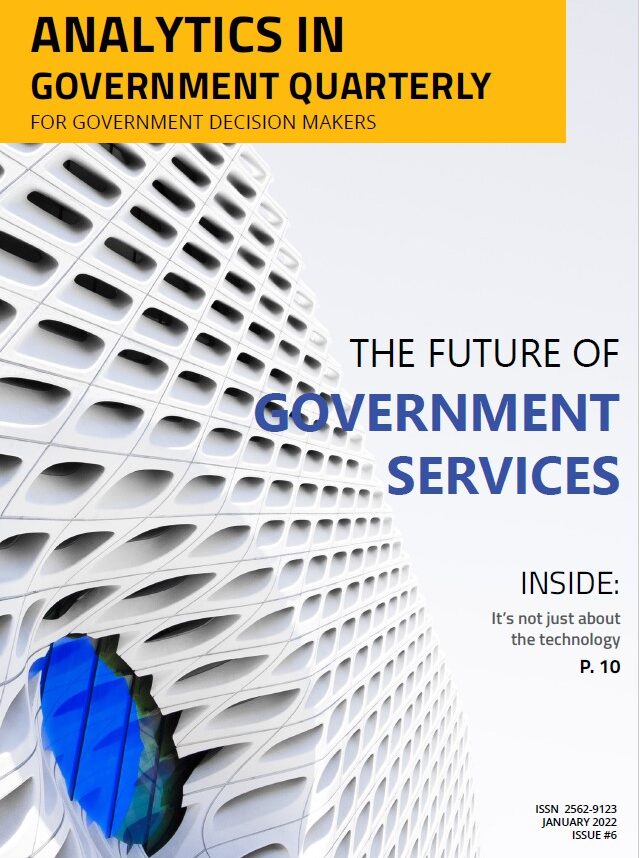FEATURES
It’s not just about the technology

Artificial Intelligence and other advanced forms of analytics are new tools for many organizations. This inherent novelty means that researchers and practitioners have focused extensively on the technology to try to better understand how to use these tools. But, to fully integrate analytics into organizations, we need to consider that we are dealing with a socio-technical system: technology impacts the way we work even as the way we work influences how we use the technology.
Socio-technical concepts emerged out of research conducted in the late 1940s by the Tavistock Institute. The first observations were noted in coal mining. One interesting fact is that as mechanization of mining at the coal face progressed, individual workers found themselves more isolated. But as more advanced forms of mechanization were introduced building on the initial efforts, teams found that they were able to work collectively on complete tasks thus reducing isolation and improving working conditions. The underlying premise is that the implementation of any technological solution should consider the specifics of the human system it is supposed to enable.
This paper gathers thoughts from AGQ authors related to the introduction of advanced analytics in government organizations. What is the long run expectation of the use of analytics? Will organizations become more productive? Will we see the kind of “mechanization of management” noted in the initial Tavistock studies? Will the wide availability of analytic tools and processes democratize information in such a way that work teams can become simultaneously more collaborative and autonomous?
 Conceptually, if done right, the use of advanced analytics helps to digitalize management so to speak. Planning, organizing and operational management can be greatly aided with analytic tools. So far, however, I’ve seen information overload more than anything else. But I think that’s because everything we are doing in this space is so new. In the long run, I believe these tools will enable government organizations to be more effective because we can capture and deliver external data on outcomes realization to managers. And we can account for time lags. The reality is that the things we do today in organizations might not have an impact until five years from now for example. We can also better align attribution: parsing out the organization’s impact on outcomes relative to the work of other organizations. These issues are complex and difficult to sort at the moment.
Conceptually, if done right, the use of advanced analytics helps to digitalize management so to speak. Planning, organizing and operational management can be greatly aided with analytic tools. So far, however, I’ve seen information overload more than anything else. But I think that’s because everything we are doing in this space is so new. In the long run, I believe these tools will enable government organizations to be more effective because we can capture and deliver external data on outcomes realization to managers. And we can account for time lags. The reality is that the things we do today in organizations might not have an impact until five years from now for example. We can also better align attribution: parsing out the organization’s impact on outcomes relative to the work of other organizations. These issues are complex and difficult to sort at the moment.

But some weaknesses remain, and as I wrote in the last issue of AGQ, our AIA strategies must evolve beyond simply focusing on Machine Learning (ML). There is a wide range of AI technologies, including Knowledge Representation, Knowledge Graphs, Decision Rules, Semantic Reasoning, Multi-Agent Systems, Robotic Process Automation, etc. All of these integrate with ML and Analytics, whether descriptive, predictive, or prescriptive. Again, it is not just about these technologies, but public sector AIA shops are bound to develop solid competencies in many of them, depending on the specific functionality required by their policies and jurisdictions.
 In the long run, more government organizations will see the opportunities of using artificial intelligence in their operations. It just makes sense. Productivity is about doing more with less, and one of the resources that is becoming scarcer is human-response time to an ever-increased demand for our attention. In this deluge of data that needs to be analyzed, artificial intelligence algorithms will do most of the grunt work and leave the high-level analysis and decision-making to humans. That will allow them more time to work on the complex cases without being overwhelmed by too many easy-to-deal, simple decisions.
In the long run, more government organizations will see the opportunities of using artificial intelligence in their operations. It just makes sense. Productivity is about doing more with less, and one of the resources that is becoming scarcer is human-response time to an ever-increased demand for our attention. In this deluge of data that needs to be analyzed, artificial intelligence algorithms will do most of the grunt work and leave the high-level analysis and decision-making to humans. That will allow them more time to work on the complex cases without being overwhelmed by too many easy-to-deal, simple decisions.

 In the context of government mandates, it is important to recognize that the complexity and scope of the business challenges are much greater than for most private sector organizations. To address significant challenges like homelessness, climate change, pandemic response or economic recovery requires a coordination of the legislative, regulatory and policy frameworks across a larger number of stakeholders. The socio-technical complexity for management and decision making is multiplied in this context.
In the context of government mandates, it is important to recognize that the complexity and scope of the business challenges are much greater than for most private sector organizations. To address significant challenges like homelessness, climate change, pandemic response or economic recovery requires a coordination of the legislative, regulatory and policy frameworks across a larger number of stakeholders. The socio-technical complexity for management and decision making is multiplied in this context.
